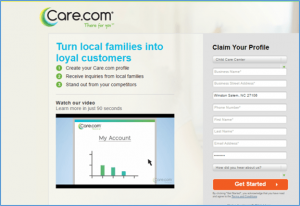Martech analyst Emily Cnossen shares inspiration and guidance to new martech teams based on her own experience of building one at SAP Concur.

Last month at MarTech East, I was practically tickled pink to be able to present “From Wild West to Business Best: Tales of a New MarTech Team.” This presentation walked through how SAP Concur built a martech team from the ground up in one year. It was so exciting to be able to share it because I lived it. I experienced firsthand the struggles that our team felt in the absence of a martech team and I was in the trenches as we worked to build a new team, new processes and new relationships.
Sharing it at MarTech East, I learned that our story resonated with many of our audience members. We are a small team trying to do great things for the business, like so many others out there. We wanted to share our story to help provide some inspiration and guidance for other teams trying to tackle the same challenges. We focused on how to set up our team’s vision and charter, how we defined the roles and responsibilities and created a MarTech Council. We shared our comprehensive marketing technology inventory methodology and results. And, perhaps most important of all, we talked about our enablement strategy and how we focus on the prioritization of our training efforts. After all, we can have a full stack of best in breed tools, but if marketers don’t know how to use any of them, we aren’t seeing any value. We are far from having it figured out, but we saw significant progress in the last year and we wanted to share our lessons learned with the broader martech community.
Prior to team existing who owned vendor selection? Also, how did you get the organization to align behind the MarTech team owning it?
Purchasing new tools was in the hands of individual teams and regions. If you had the budget, you could buy a tool. We lacked a cohesive vision and selection criteria. This siloed approach resulted in a lot of pain when certain requirements would come as a surprise late in the game. Moreover, our Procurement and IT teams were overwhelmed by the barrage of requests coming at them without global prioritization. That widely recognized pain was a big contributor to getting the business on board with the MarTech team owning new tool evaluations. Marketing leadership was 100% behind the idea, which gave us strong footing to begin with.
We expected to be met with resistance. After all, each individual team was used to being able to do this on their own. But we were surprised when the primary reaction was relief. Our marketing groups realized they could not manage every part of the process effectively and were willing to turn the evaluations, and the navigation of our internal processes, over to our team. Additionally, for the teams who historically lacked a budget to purchase their own tools, the process gave them a path to seek out collaboration with other teams. Having the leadership buy-in, and the understanding of the benefit among the marketers, made rolling out the new evaluation process much easier.
Who makes up the MarTech Council? Is it cross-functional?
It is cross-functional! I think that cross-functional element is the source of the MarTech Council’s success. We have representation from each of our regional marketing teams, as well as additional functional groups like IT, procurement and sales ops. When we started the MarTech Council, bringing those groups together at the same table was groundbreaking for our siloed organization. Simply through the opportunity to have conversations together, we have been able to make progress we never would have if we hadn’t invited so many groups to be a part of the Council.
How much of your time/effort is reactive to what global team wants in MarTech versus you driving proactive planning? How do you execute proactive planning?
I would estimate that 20% of our time is reactive and 80% is proactive. With the help of leadership support, our team has felt empowered to create a plan and run with it. We are the experts, and we identify where our efforts will have the most impact. Since we are such a small team, being strict about sticking to those predetermined priorities has prevented us from getting bulldozed by reactive requests.
Our most reactive work is driven by new tech requests. When a new request is submitted, we continually evaluate and prioritize against outstanding requests. But when it comes to things like our enablement strategy, we adhere closely to our established plan. Our enablement plan for the year was focused on specific tools that needed additional support. We then prioritized those tools and began executing against those priorities. Creating enablement materials for the first-priority tools was given the majority of our time, and so on down the line.
Overall, we have been able to be successful in this area by having the ongoing support of leadership and continually reminding people ‘if we do X reactive thing, then it means we cannot do Y planned thing.’
Who is responsible for creating training resources and policing consistent usage of the tools? Do you have a dedicated training manager? Who is responsible for creating training resources, written toolkits and knowledge-base articles?
Me! Okay, maybe not for absolutely all those things, but currently our MarTech team consists of two roles and I am the only one dedicated to enablement. With such limited resources, we frequently partner with our Global Enablement team (who works on enablement for all of sales and marketing), but that team is focused more on onboarding. For enablement materials beyond that, it’s my responsibility to prioritize the tools and execute on an enablement plan for the most needed materials. I create a lot of tip sheets, because I can partner with our subject matter experts in order to turn those around quickly. As far as policing tool usage, we are still thinking through the best way to go about it. Right now, we rely heavily on our regional analysts who work more directly with the marketing teams.
If you had to compress what you did from 6 months to 6 days what would you do?
Let me start off by saying, I am eternally thankful we did not have to do this! One year went by fast enough! But if I had to, I would have still begun by doing a MarTech inventory. With only six days available, it would not be able to be as in-depth as ours was, but I still think it would be crucial to have a consolidated list of all the marketing tools. Even without an in-depth analysis of each tool, I would still prioritize gathering the most basic understanding of whether the tool was providing the value it should be or not.
From there, I would have focused on getting the new tech request process rolled out and establishing the MarTech Council. Without a process for incoming MarTech requests, the inventory would have quickly been rendered useless. I think a MarTech Council is a key part of that evaluation process, so even though working through who the right people are to serve on the council would take a lot of time in those six days, I think it would be worth it.
After all that is done, hopefully, there is still at least a little time left to begin to sketch out an enablement plan. What tools are globally available that have an urgent need for training support? Even just picking one top tool can provide some excellent direction.
Opinions expressed in this article are those of the guest author and not necessarily Marketing Land. Staff authors are listed here.
Marketing Land – Internet Marketing News, Strategies & Tips
(14)







